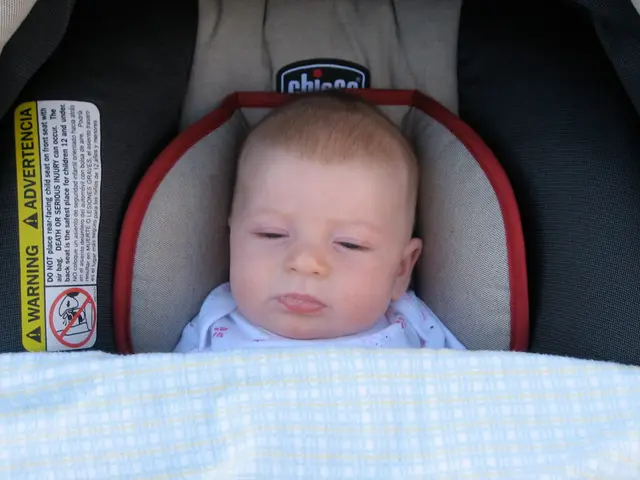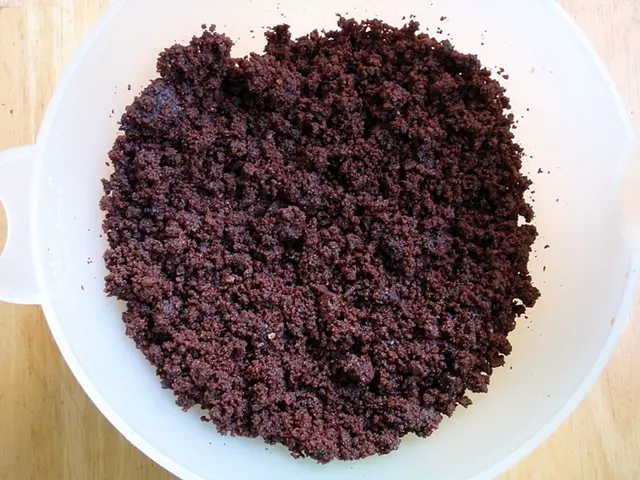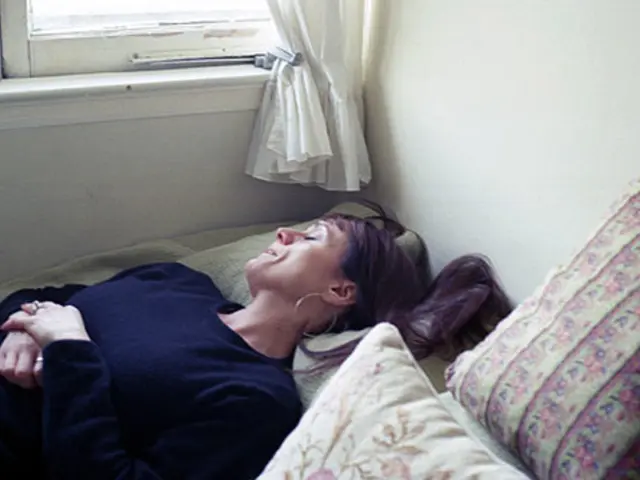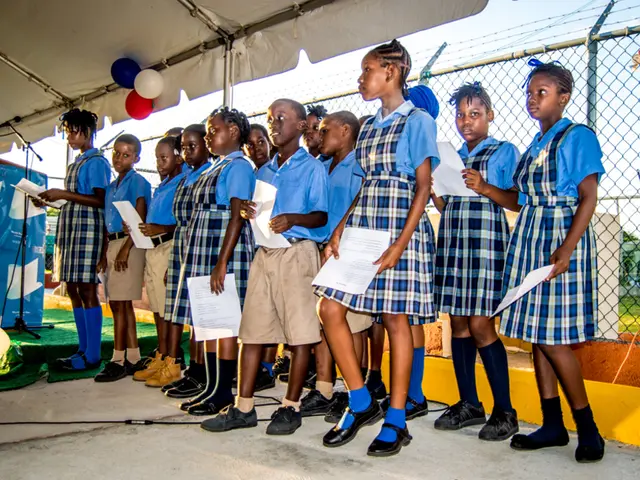Trump disbands 'Safe to Sleep' infant safety unit. Here's what parents need to be aware of.
In the good ol' days, I'd find myself sneaking into my baby boy's room like a cat burglar, assuring myself he was still breathing. Thanks to Safe to Sleep, I knew the harsh reality that cot deaths were a leading cause of infant demise in the United States.
The government banded together with private entities back in 1994 to launch the "Back to Sleep" campaign, which later became known as Safe to Sleep. This initiative has saved countless babies from their slumber's clutches, as confirmed by none other than Dr. Rachel Moon, a pediatrician and top researcher at the University of Virginia who co-authored the American Academy of Pediatrics' guidelines on safe infant sleep.
Moon recalls the immediate impact: "When Safe to Sleep first rolled out, there was a 50% drop in deaths. That's huge!"
But alas, under the Trump administration, the office tasked with leading Safe to Sleep was dismantled.
Safe sleep recommendations for infants involve laying them on their back, not stomach, on a firm mattress, in their own space like a crib or bassinet. Avoid cozy spots like sofas, armchairs, swings, or car seats for naps unless it's a vehicle. And keep soft items that could potentially cause suffocation, like blankets, pillows, and crib bumpers, far from their sleeping area. Unintentional suffocation remains the leading cause of injury death for infants under a year.
Safe to Sleep was responsible for creating, distributing, and advertising this life-saving information on social media and in pamphlets. These materials reached out to various communities, translated into various languages, and were provided to hospitals and doctor's offices to distribute.
This diligent work was led by the office of communications at the Eunice Kennedy Shriver National Institute of Child Health and Human Development (NICHD). Unfortunately, that entire department was terminated on April 1, according to STAT News reports.
"They simply emailed me to say that with the office termination, so was Safe to Sleep," lamented Moon, who collaborated on the campaign.
Moon was taken aback by the sudden, secretive move, especially considering sleep-related infant deaths had risen an alarming 12% between 2020 and 2022, according to the most recent data. Many researchers link this increase to a decline in parents receiving necessary safe sleep information during the pandemic.
Alison Jacobson, from nonprofit First Candle, shares Moon's concerns. "We'll continue to educate parents on safe sleep recommendations, but we're nowhere near equipped to replace the resources NICHD provided," she said.
NPR reached out to the National Institutes of Health for comment, with the agency responding that no final decision had been made regarding the future of Safe to Sleep. existing materials remain accessible online.
When I visited the Safe to Sleep website, pamphlets could still be downloaded, but many were designated as temporarily unavailable for order.
Christina Stile, the former Deputy Director for the NICHD communications office, has left the building. "It's possible that someone at NIH could take over, but many communication offices have been affected by job cuts, so I'm unsure who would be capable," she said.
Jacobson has heard heart-wrenching tales of parents who didn't get the vital safe sleep information they needed. She fears this could spell trouble for parents attempting to keep their babies safe in the future.
Edited by Jane Greenhalgh
Copyright 2025 NPR
[1] STAT News. (2022). The COVID-19 pandemic is causing a surge in sleep-related deaths among infants. Retrieved from https://www.statnews.com/2022/05/04/more-infants-dying-from-sids-and-other-sleep-related-causes/
[2] American Academy of Sleep Medicine. (2025). Health advisory: Sleep environment and equipment in childcare settings. Retrieved from https://www.sleepeducation.org/media/3594/sleep-environment-advisory-2025-final.pdf
[3] National Institutes of Health. (2025). SIDS and other sleep-related infant deaths. Retrieved from https://www.nichd.nih.gov/health/topics/sid#:~:text=What%20is%20SIDS%20and%20sleep-related,age%201%20year%20old%20according%20to%20the%20CDC.
[4] Baltimore City Health Department. (n.d.). Safe Sleep Assessment Tool. Retrieved from https://health.baltimorecity.gov/health-topics/safe-sleep-assessment-tool
- The government and private entities, working together in 1994, launched the "Back to Sleep" campaign, later known as Safe to Sleep, which aimed to reduce cot deaths, a leading cause of infant demise in the United States.
- Dr. Rachel Moon, a pediatrician and top researcher, collaborated on the American Academy of Pediatrics' guidelines on safe infant sleep and witnessed a 50% drop in deaths when Safe to Sleep was first implemented.
- Under the Trump administration, the office responsible for leading Safe to Sleep was dismantled, leading to concerns about the future of family health, mental health, and parenting.
- The Eunice Kennedy Shriver National Institute of Child Health and Human Development (NICHD) previously led the diligent work of creating, distributing, and advertising life-saving safe sleep information for infants.
- Unintentional suffocation remains the leading cause of injury death for infants under a year, making it crucial to follow guidelines such as placing infants on their back, on a firm mattress, and in their own space like a crib or bassinet.
- Amid concerns about the future of Safe to Sleep, Alison Jacobson from nonprofit First Candle expressed her intention to continue educating parents on safe sleep recommendations, but fears they may not be equipped to replace the resources previously provided by the NICHD.










